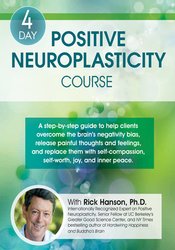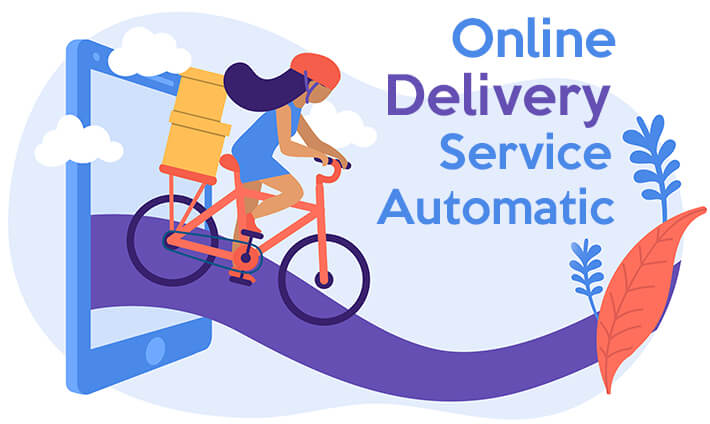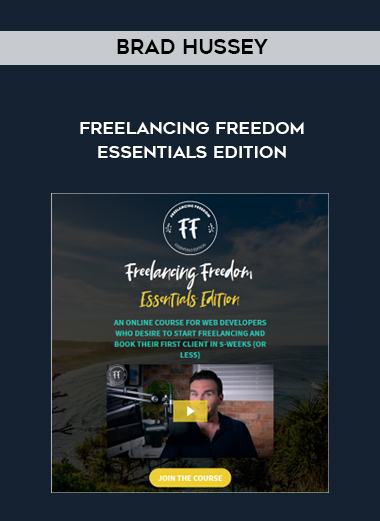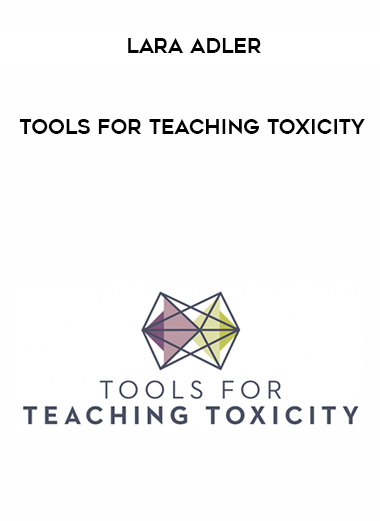
Rick Hanson – 4-Day: Positive Neuroplasticity Course with Rick Hanson, Ph.D.
Salepage : Rick Hanson – 4-Day: Positive Neuroplasticity Course with Rick Hanson, Ph.D.
Archive : Rick Hanson – 4-Day: Positive Neuroplasticity Course with Rick Hanson, Ph.D. Digital Download
Delivery : Digital Download Immediately
- Rick Hanson, Professor
Time: 24 hours and 12 minutes
Audio and video formats are available.
Copyright: 21st of October, 2019Rick Hanson, Ph.D., is a New York Times bestselling author and a world-renowned authority in positive neuroplasticity.
Dr. Hanson’s 40-year career in clinical psychology, human potential, and neuroscience has enabled her to assist thousands of individuals in rewiring their brains, overcoming mental health difficulties, and becoming the best version of themselves.
His work has been lauded by Stephen Porges, Tara Brach, Peter Levine, Kristine Neff, and Dan Siegel, as well as highlighted in national media and loved by millions of readers as a trustworthy voice.
This course recording provides you with a once-in-a-lifetime opportunity to train with Dr. Hanson himself and learn how Positive Neuroplasticity tactics may help your clients achieve more effective therapy results!
Dr. Hanson will present a useful toolkit consisting of accessible strategies, as well as a dependable roadmap for how to more expertly assess and treat clients and accelerate long-term change.
Watch this 4-day hands-on recording to learn how to:
Positive neuroplasticity strategies can be used to treat anxiety, despair, trauma, and shame.
With evidence-based practices, you may promote speedy and far-reaching healing and growth.
Assess which psychological resources your clients require the most skillfully for better therapy outcomes.
Transform your clients’ experiences into long-lasting inner strengths for better clinical outcomes.
Skills and instruments for making long-term changes in the brain
Overcome therapeutic difficulties quickly by employing positive psychological content to calm and replace negative material Work with couples, children, and other particular groups more effectivelyDon’t pass up this once-in-a-lifetime opportunity to learn with a prominent expert on positive neuroplasticity and gain the satisfaction of introducing new and successful healing pathways to your clients.
Handouts
4-Day Positive Neuroplasticity Certificate Course Manual (12.8 MB)
Outline 145 Pages Available After Purchase
THE ESSENCE OF POSITIVE NEUROPLASTICITY: THE FUNDAMENTALS OF POSITIVE BRAIN CHANGE AND HOW TO MEET THE CHALLENGES OF YOUR CLIENTS BY HELPING THEM GROW DURABLE PSYCHOLOGICAL RESOURCES
The importance of psychological resources in dealing with customers’ difficulties and weaknesses
Challenges, weaknesses, and resources in the stress-diathesis model
Resources are found in the planet, the body, and the intellect.
The unique opportunity and worth of mental resources
Overview of therapeutically important mental resources (i.e., psychological resources)
Why do we learn the majority of our mental resources? learned rather than intrinsic
The required two-stage process of all learning, which includes the acquisition of all mental resources: installation and activation
Why does experiencing not equal learning? Why do most therapeutic experiences have little long-term value?
Activity: Assist clients in identifying important obstacles and weaknesses, and then in locating appropriate psychological services for them.The Learning Neuropsychology
Negativity bias has evolved in the brain.
Clinical consequences of poor therapeutic experience translation to long-term alterations in brain structure and function
The most important pathways of experience-dependent neuroplasticity
What exactly is positive neuroplasticity?
Discussion of the clinical consequences of the negative bias
Explain the negative bias to a client.Customers as Active Learners
Environmental, behavioral, and psychological elements that promote learning and, as a result, the development of psychological resources
The unique potential and importance of mental learning components
Allow clients to be active participants in their own healing and development.
There are two types of mental factors: Engagement and context
The potential and worth of engagement factors
Clinical advantages of clients actively interacting in their experiences to steepen their learning/healing/growth curves
Activity: Experience the two-stage learning process while utilizing engagement variables.
Activity Explain to a customer the two-stage learning process, and then outline engagement-type mental learning variables.The Three Productive Ways to Engage the Mind
Observing, embracing, and examining the contents of consciousness
Letting go entails avoiding, reducing, or releasing harmful or upsetting stuff.
Giving up – producing, sustaining, or growing beneficial materials
What is mindfulness, and why is it important in letting go and allowing in?
The natural healing pattern of letting be, letting go, and allowing in
Activity: Try out the three different techniques to stimulate the mind.
Activity: Explain to a customer the three techniques to engage the mind.
Practice the three techniques to engage the mind.Clients Are Being Taught Positive Neuroplasticity
Positive neuroplasticity research
How to lead customers via experiential exercises
Distractibility, fear, shame, anxiety, societal expectations, and trauma are all barriers to having and internalizing constructive experiences.
Activity: Describe positive neuroplasticity to a customer.EXPERIENCES FOR HAVING, ENRICHING, AND ABSORBING: HOW TO MAKE THE MOST OF THE GOOD TIMES CLIENTS ARE ALREADY EXPERIENCING, TRANSFORMING PASSING STATES INTO LONG-LASTING TRAITS
Overview of the HEAL Framework of Learning Engagement Factors
Have a rewarding experience
Enhance it by enhancing the brain activity that underpins an experience.
Increase the sensitivity of the brain’s memory-making systems by absorbing it.
Connect good and negative content.
Experience the HEAL process as an activity.
Activity: Explaining the HEAL process to a customer.Having Positive Experiences
Take note of positive events in the foreground and background of your consciousness.
Create good experiences; an overview of several approaches
The five components of an experience are as follows: Thoughts, perceptions, emotions, wants, and acts; why are they all opportunities to acquire a psychological resource?
Deal with “yes, but” and other impediments to clients having positive experiences.
Activity: Observe the five components present in a fun encounter.
Activity: Assist a coworker in being aware of the five aspects included in a significant encounter.Enhancing Experiences to Improve Neural Registration
Enriching elements include duration, intensity, embodiment, novelty, and salience.
Activity: These three criteria were used to a psychological resource experience.
Activity: Explain to a customer these three factors Show a coworker how to use these three aspects of absorbing to deepen the integration of a psychological resource experienceLINKING POSITIVE AND NEGATIVE MATERIALS: SOOTHE, CONTEXTUALIZE, AND REPLACE NEGATIVE MATERIALS WITH POSITIVE MATERIALS.
Overview of Positive and Negative Material Connections
Memory, both implicit and explicit
How negative material in the brain gets consolidated, activated, and reconsolidated
The period of time during which negative material reconsolidation can be interrupted.
Three approaches of dealing with bad content: Increase appropriate psychological resources, link positive with negative, and prevent negative reconsolidation.
Self-compassion: A valuable resource for dealing with bad content and an example of Linking\sActivity: Experiment with the Link step
Explain the Link step to a customer. Activity: Walk a coworker through the Link step.Discussion and application of the presented material
Four strategies for implementing positive neuroplasticity and the HEAL framework with clients
Positive neuroplasticity should be adapted for children.
Discussion with a colleague about how to use positive neuroplasticity and the HEAL framework with one or more difficult customers.
Activity: Describe the Link step to a customer.
Guide a customer through the Link phase.HOW TO IDENTIFY SPECIFIC PSYCHOLOGICAL RESOURCES THAT ARE MATCHED TO CLIENTS’ PSYCHOLOCIAL ISSUES
Our Three Needs and Two Ways to Address Them
The three basic requirements of all animals, including humans: Security, fulfillment, and connection
Meeting these needs via avoiding harms, approaching benefits, and becoming attached to people
Theory of the Social Brain
Why is there more to life than avoiding pain and attaining pleasure?
The evolutionary phases of the reptile, mammalian, and primate/human brains, as well as their relationships to the Avoiding, Approaching, and Attaching systems
Our core two methods of satisfying demands are: Responsive and Reactive modes, both without and with stress
Explain what it means when clients switch between responsive and reactive modes, as well as the impact of each Activity: Discuss with a coworker these three needs and the two ways to address them.
Identifying Critical Psychological Resources Based on Client Needs
Instructor’s demonstration of finding crucial resources with a volunteer
Overview of resources for safety, fulfillment, and connection
The significance of constantly internalizing experiences of well supplied requirements
The symbolism of touching the lizard repeatedly, feeding the mouse, and cuddling the monkey
Activity: Assist a coworker in locating critical resources for a problem.
Activity: A basic sense of safety, fulfillment, and connection: calm, happiness, and love
Assisting Clients in Identifying and Internalizing Critical Psychological Resources
Using the HEAL framework, demonstrate to an instructor and a volunteer identifying and internalizing one or more essential resources.
Discussion about what contributed to the success of this event
Activity: Using the HEAL framework, assist a coworker in identifying and internalizing one or more essential resources.
GROWING SAFETY STRENGTHS: CREATE A FOUNDATION OF PEACE AND SAFETY IN WHICH CLIENTS CAN GAIN THE CONFIDENCE THEY REQUIRE TO MEET CHALLENGES.
Important Resources for Feeling and Being Safe
Fear, rage, and powerlessness are all indicators of safety threats.
Why did humans develop to exaggerate risks while underestimating opportunities and resources?
Obstacles to Anxiety Reduction
Experience of calm strength via activity
Activity: The realization that you are generally OK right now.
Explain to a coworker how to have and absorb more sensations of calm strength and fundamental well-being, and thus feel less anxious.
Assist clients in increasing their safety resources.
Additional safety resources include a sense of agency, protection, and sanctuary.
Our susceptibility to developing learned helplessness
Discussion about what contributed to the success of this event
Trauma-specific applications
Activity: Using the HEAL framework, assist a coworker in identifying and internalizing resources for being and feeling safer.
GROWING SATISFACTION STRENGTHS: BUILD HEALTHY MOTIVATION IN CLIENTS AND ASSIST THEM IN SETTING UP AND ACCOMPLISHING GOALS
Key Resources for Feeling and Being Satisfied
Indicators of satisfaction challenges: Disappointment, loss, weariness, and dullness
Aspiration without attachment, ambition without drive
Activity: Feelings of appreciation and joy
Experience of achieving a goal and feeling accomplished
Explain to a coworker how to have and internalize more feelings of thankfulness, pleasure, and achievement while feeling less frustrated.
Assist clients in increasing their resources for satisfaction.
In the brain, there is like and desiring; enjoy without craving.
How to Increase Motivation Through Associational Learning
Addiction-specific applications
Activity: Using the HEAL framework, assist a coworker in increasing motivation for something.
GROWING CONNECTION STRENGTHS: IMPROVE CLIENT RELATIONSHIPS AND INCREASE THEIR SENSE OF SELF-WORTH
Important Resources for Feeling and Being More Connected
Hurt, rejection, loneliness, hate, inadequacy, and shame are all indicators of connection issues.
Normal narcissistic requirements
Activity: The sensation of being cared for and caring for others.
Activity: Using the HEAL framework, assist a coworker in internalizing psychological resources for increased self-worth.
Assist clients in increasing their connection resources.
Three empathy neural circuits
Kindness and assertiveness, love and strength are combined in the strong heart.
Activity: Explain empathy circuits to a client and explore how the client might be more emphatic in daily life.
Activity: Teach a coworker about the psychological resources that maintain a robust heart, as well as how to have and internalize these experiences.
Managing Obstacles in the Responsive Mode
Experiences of serenity, happiness, and love
Activity: Discuss with a coworker how to deal with a major difficulty in the Responsive mode, including what this might look and feel like.
Activity: Using the HEAL framework, guide a colleague through experiencing and internalizing an experience of a vital resource for managing tough situations from the Responsive mode.
APPLICATIONS AND IMPLICATIONS: LEARN HOW TO ADAPT AND APPLY THESE METHODS TO A VARIOUS NEEDS AND SITUATIONS.
Positive Neuroplasticity and the HEAL Process Can Be Used to Address Specific Clinical Issues and Situations
With depression, mindfulness training
Participants’ specific concerns
Discussion with a coworker concerning applications to one or more clients.
The Clinical Effects of Societal Factors
How economic, cultural, and other environmental influences, for better or worse, influence mental health
How internalizing psychological resources and shifting into the Responsive mode makes people less prone to manipulations of fear and fury, possessiveness and greed, and grievance and revenge toward others.
Activity for the final discussion: Peace, happiness, and love
RESEARCH LIMITATIONS AND POTENTIAL RISKS
Rick Hanson, Ph.D., Professor 13 related seminars and products
Rick Hanson, Ph.D., is a psychologist, a Senior Fellow at UC Berkeley’s Greater Good Science Center, and a New York Times best-selling book. Buddha’s Brain (New Harbinger, 2009), Just One Thing (New Harbinger, 2011), Hardwiring Happiness (Harmony, 2016), Resilient (Harmony, 2018), Just One Thing Card Deck (PESI, 2018), and Mother Nurture (PESI, 2018) are among his works available in 28 languages (Penguin, 2002). He is the editor of the Wise Brain Bulletin and has a number of online programs. He is a UCLA alumnus and the founder of the Wellspring Institute for Neuroscience and Contemplative Wisdom. He has spoken at NASA and Google, as well as Oxford, Stanford, Harvard, and other prominent institutions, and has taught at meditation centers across the world.
Dr. Hanson has served as a trustee at Saybrook University, on the board of Spirit Rock Meditation Center, and as president of the FamilyWorks Board of Directors. He began meditating in 1974, studied numerous traditions, and now conducts a weekly meditation group in San Rafael, California. His work has been published on the BBC, CBS, and NPR, and over 140,000 people subscribe to his free weekly email, Just One Thing.
He likes to go rock climbing and take a vacation from emails. His wife and he have two grown children.
Disclosures for Speakers:
Rick Hanson works in private practice. PESI, Inc. pays him a speaking honorarium.
Rick Hanson does not have any relevant non-financial relationships to declare.
More from Categories : Health & Fitness














Reviews
There are no reviews yet.